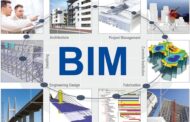Building Information Modeling (BIM) has revolutionized the fields of architecture, engineering, and construction. Building design, modeling, and construction professionals now have it simpler and more accurate thanks to BIM software. Particularly Revit BIM has grown significantly in popularity because of its adaptability and potent capabilities. Revit BIM does, however, have advantages and disadvantages, just like any other technology. In this article, we’ll look at the benefits and drawbacks of using Revit BIM to help you decide if it’s the best option for your project. So buckle up as we take you on a journey through Revit BIM, whether you are an architect, engineer, or contractor.
Advantages of Revit BIM
The power and flexibility of Revit BIM are huge advantages for the AEC sector. Let’s examine each of them individually.
Greater Collaboration
Improved collaboration between architects, engineers, and contractors is among Revit BIM’s biggest benefits. All parties can collaborate on a single model using Revit BIM, which eliminates the need for multiple files and formats. As a result, there are fewer communication blunders, there is better coordination, and the project is finished quicker.
Timesaving
Designing and modeling take much less time when using Revit BIM. With the help of the software, architects, and engineers can quickly produce precise 3D models of buildings using a variety of tools and templates. revit bim services save time and enable professionals to focus on other important aspects of the project.
Cost-Effective
The AEC industry can use Revit BIM as a tool at a reasonable price. The software offers precise design and modeling, lowering the possibility of mistakes and rework. For the project owner, the architects, engineers, and the contractors involved in the project, this results in cost savings.
Better Visualization
Revit BIM provides better visualization of the project design. The software allows architects and engineers to create accurate 3D models of the building, which can be viewed from any angle. This helps project stakeholders to understand the design better and make informed decisions.
Sustainable Design
Revit BIM enables sustainable design by providing tools for energy analysis and modeling. Architects and engineers can use the software to analyze and optimize building performance, resulting in more energy-efficient and sustainable buildings.
Disadvantages of Revit BIM
However, Revit BIM also has its share of disadvantages. Here are some of them.
Steep Learning Curve
Revit BIM has a steep learning curve, especially for professionals who are new to the software. 3d modeling services are complex and require extensive training and practice to master. This can be a challenge for small firms with limited resources.
Expensive
Revit BIM is an expensive software, and its licensing costs can be a burden for small firms. The software requires high-performance hardware, which can further increase the costs of implementation.
Limited Compatibility
Revit BIM has limited compatibility with other software and formats. This can be a challenge when collaborating with stakeholders who are using different software or formats. It may require additional time and effort to convert files and ensure compatibility.
Heavy Resource Usage
Revit BIM requires high-performance hardware and significant system resources. This can be a challenge for small firms with limited resources or older hardware. Running Revit BIM on older hardware may result in slower performance and longer rendering times.
Design Limitations
Revit BIM has some design limitations, particularly when it comes to complex shapes and forms. The software is designed for orthogonal forms and may not be suitable for projects that require complex geometries or freeform shapes.
Conclusion
Revit BIM is a powerful and versatile tool that offers numerous benefits to the AEC industry. However, Revit BIM also has its share of disadvantages, including its steep learning curve, expense, limited compatibility, heavy resource usage, and design limitations. Despite these challenges, Revit BIM remains a popular choice for architects, engineers, and contractors in the AEC industry due to its ability to streamline project workflows and increase efficiency.
